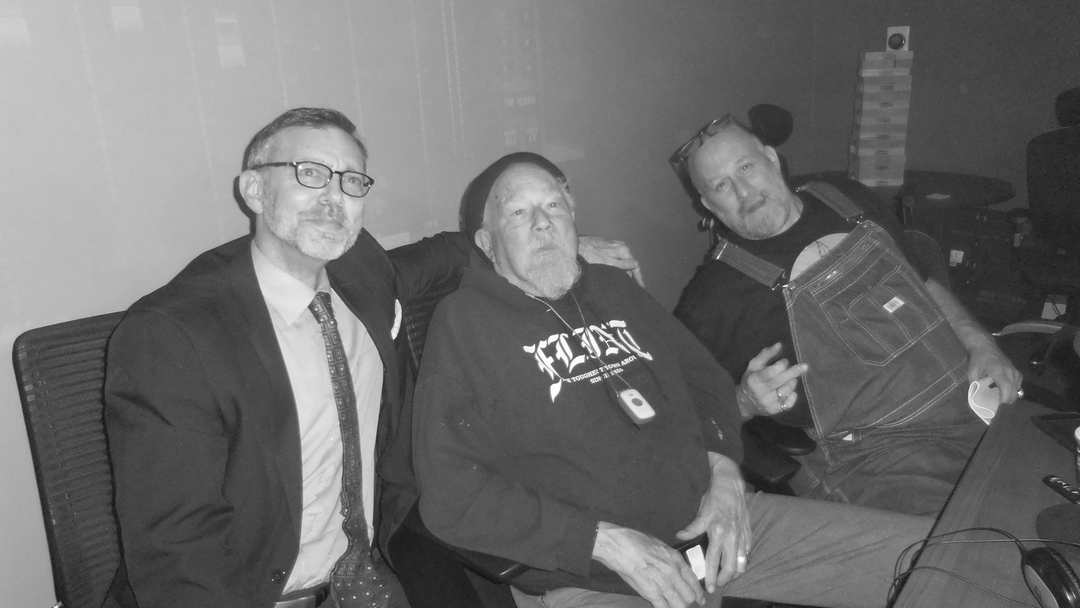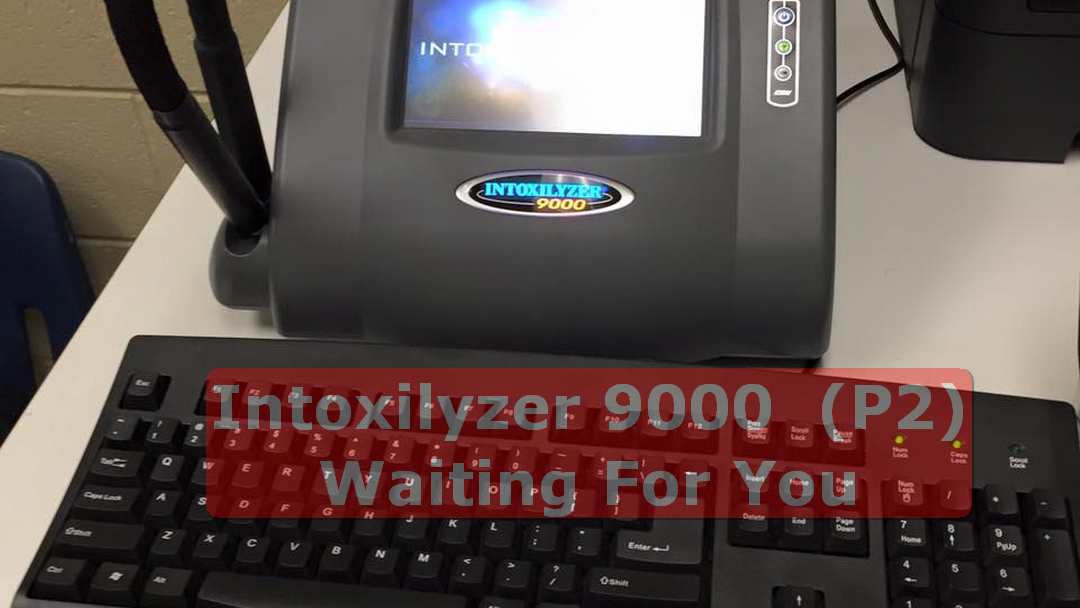The Intoxilyzer 9000 (part 2 of 2)
Using it
The Intoxilyzer is user-friendly and equipped with a built-in feature to alert officers of any potential issues. As a precautionary measure, officers are specifically advised to switch off their portable radios prior to collecting a breath sample, as the Intoxilyzer has the capability to detect and notify the presence of radio frequency interference (RFI).
The display screen will also prompt the officer to enter their certification date, ensuring that it is up to date. It will verify if the 15-minute observation period has been completed, allowing the officer to proceed if they select yes. However, if they select no, the Intoxilyzer will not permit the officer to continue.
The device has the capability to enforce a 15-minute waiting period, ensuring that it actually takes place rather than simply allowing the officer to check a box. However, MSP made the decision not to include this function.
And, compared to the DataMaster’s requirement for manual entry of the start time for the 15-minute waiting period, the Intoxilyzer simplifies the process by prompting the officer to confirm whether the waiting period has been fulfilled with a simple yes or no response.
For these reasons, attorneys must carefully review the police videos to determine if the required 15-minute observation period was indeed fulfilled.
Functionally, there have been observations that the Intoxilyzer presents some challenges in terms of blowing into it, potentially hindering its proper functionality due to inadequate air intake. However, opinions on this matter may vary among individuals.
The Intoxilyzer 9000 Ticket
The Intoxilyzer tickets consist of two pages, providing a wealth of information. For a glimpse of a sample ticket, please refer to exhibit A—Michigan Forensic Breath Alcohol Analytical Report.
The ticket will show the “subject result 1” and “subject result 2,” indicating the outcomes of the initial and subsequent breath samples.
In addition to providing the officer with the breath alcohol concentration (BrAC), the ticket also serves as a guide to familiarize them with the proper functioning of the device.
If the reading shows a difference of .10 and .11, the officer will likely assume that the machine is functioning correctly. However, if the readings differ significantly, such as .10 and .14, it is crucial for the machine to promptly notify the officer of a potential issue.
A third breath sample will then be requested of the driver.
If a driver fails to provide an adequate breath sample, rather than showing “subject result 1” or “subject result 2,” the display will indicate “incomplete test.” This can also occur due to other reasons, which brings into question the reliability of this statement and its potential to be considered as hearsay.
The Histogram
Page two of the ticket features a histogram, a graphical representation of the slope detector. This histogram displays two lines: one represents the breath sample, while the other (the thicker line) represents the alcohol level. The inclusion of this histogram on the ticket is a response to the demand from defense attorneys.
Where the two lines intersect represents the BrAC, although the readability is hindered by the histogram box’s size.
In addition, fluctuations in the alcohol line, with an initial rise followed by a dip and another rise, could possibly suggest the existence of mouth alcohol.
Lawyers should pay close attention to histograms that display this particular pattern without identifying the results as invalid samples.
Acceptable Range – Like the DataMaster, the control test in the Intoxilyzer must be within a certain range.
The DataMaster was 5 percent either way (.076 to .084). For reasons unknown to these authors, the Intoxilyzer is allowed to be further out of tolerance on the low side (.074 to .084).
The expiration date at the bottom of the second page signifies the end life of the dry gas bottle. It should be noted that any officer has the authority to replace the bottle and input the lot number and expiration date. Consequently, officers are able to choose any date after the test date. However, it is imperative for all agencies to procure replacement bottles from the MSP.
Training Requirements
Administrative Rule Changes Regarding Classification. Police officers must be certified on administering a PBT now (class I) and calibrating the PBT (class II).
The operator must be class II or higher for the DataMaster and class III or higher for the Intoxilyzer. The higher classes are for officers who can train others on the Intoxilyzer and then for officers who can calibrate the device.
Each certified class operator may train a lower class operator. See AC, R 325.2658. The amended rules state that to maintain a class III certification, each class III operator certified after January 1, 2022, is required to recertify every two years. Id.
Operators certified before January 1, 2022, are required to recertify before December 31, 2023, and every two years after that. Id.
Accuracy
Officers are required to enter their certification date into the Intoxilyzer while operating it. The certification date listed on the first page of the breath test ticket shows the officer’s date of certification or recertification.
Defense attorneys should verify this information with the Michigan Commission on Law Enforcement Standards because an officer may forget to recertify. The Intoxilyzer does not verify the information an officer enters into it.
Ultimately, defense attorneys must remember to verify that the officer has the necessary training and certifications. Furthermore, because the certification date, 15-minute observation time, and dry-gas expiration date are easy to manipulate, defense attorneys should verify those numbers as accurate.
Of course, this does not mean that police are going to go out there and try to manipulate the system, but if an officer forgets to recertify on time or cannot remember the actual date of their training, an officer could simply enter any date that would not yet be expired to get the Intoxilyzer to accept a breath sample from an arrested subject, and there is no way the Intoxilyzer will know whether it is accurate.
Operation
Information That Must Be Entered into the Intoxilyzer
For the Intoxilyzer to function, an officer must enter the following:
• subject’s information (from the license)
• officer’s operator number
• officer’s certification date
• yes to the 15-minute observation time prompt
The 15-Minute Observation Period for Multiple Subjects
There is no 15-minute lockout on the Intoxilyzer, although the device is capable of such a feature. The idea is that an officer may be observing a subject while another officer is using the machine with a separate subject and thus not need an additional 15 minutes for his subject.
Thus, rather than making the second officer start a new 15-minute observation period, the officer can simply answer that the waiting period has been satisfied.
Note that even the MSP training materials recognize that the 15-minute observation period is the most litigated issue in breath testing, but then the MSP turned off the 15-minute lockout feature.
Thus, this issue should be investigated fully by the defense attorney.
Testing Sequence
The Intoxilyzer’s testing sequence is vastly different from that of the DataMaster as it includes a control test within the testing sequence. The Intoxilyzer’s testing sequences are the following:
• operational diagnostic test
• air blank
• subject sample
• air blank
• control test at 0.08 percent
• air blank
• rest
• air blank
• subject sample
• air blank
• operational diagnostic test
• air blank
Like the DataMaster, the Intoxilyzer runs internal diagnostic tests to make sure it is in working order. In addition, like the DataMaster, the Intoxilyzer runs air blanks to make sure it purges any contaminants in the breath test tube. The air blanks cause the breath tube to suck in the ambient air in the room. If it detects other sources of alcohol during that process, it is supposed to abort the test and notify the officer to start over.
A major change from the DataMaster is that the Intoxilyzer will run a dry-gas calibration test targeting 0.08 between subject samples. This is the same test that the DataMaster automatically runs once per week.
Because the Intoxilyzer runs the dry-gas test between each subject sample, the MSP is no longer required to perform the weekly dry-gas calibration tests required of the DataMaster. AC, R 325.2653(2). Under the amended rules, the Intoxilyzer requires a full calibration check twice per calendar year. AC, R 325.2653(4).
There is no requirement that these two tests be 180 days apart. They can be on consecutive days or 364 days apart.
Each subject test sequence (and each calibration check done by a law enforcement department) “must be retained either in log form by the agency where the instrument is installed or electronically within the instruments memory.” AC, R 325.2653(2).
Another notable difference between the DataMaster and the Intoxilyzer is that the DataMaster reported the test results truncated to the second digit (e.g., 0.08), while the Intoxilyzer will report the results to the third digit (e.g., 0.080). The allowable variances between the first and second tests remain the same as the allowable variances for the DataMaster.
A Budget?
It is unclear at this point whether there are any differences in the uncertainty budget between the Datamaster and the Intoxilyzer.
In Georgia and Texas, the uncertainty budgets are different but both are around 5–6 percent, although Texas’s rules allow a variation of up to 12 percent between dry-gas tests. Michigan allows the dry-gas calibration check to vary between 6.7 and 8.8 percent.
This should not be confused with an uncertainty budget, which the MSP said it intended to calculate for each machine at installation.
Scan that Driver License
The officer can enter the driver’s information in a few different ways. One way is to use the magnetic strip on the back of the driver’s license. An officer can also use the bar code scanner and scan the back of the driver’s license.
Or the officer may simply use the keyboard to manually enter the information. By scanning it, it is less likely the information entered will be incorrect.
Attorneys
Attorneys need to be familiar with the information on the evidence ticket and be prepared to address any inconsistencies between the histogram and the reported results.
They also need to make sure to have reviewed evidence tickets from before and after the tests of their own client to see if there were any problems with the dry-gas tests. These additional records will likely not be provided with discovery material because they involve subject samples from individuals not related to the case. As such, attorneys will need to request these additional records through the Freedom of Information Act, MCL 15.231 et seq.
Finally, attorneys should make sure that they get copies of the twice-annual calibration checks to see if there were any issues.
It is important to remember that while the Intoxilyzer is a new machine, the basics of drunk driving law have not changed. Attorneys should nonetheless study the differences between the two devices and pursue any issues.
As previously discussed, the amended administrative rules require police officers to recertify every two years, which was not a requirement in the past.
With the DataMaster, an officer could be certified to operate it, be off the road for ten years (maybe assigned to the detective bureau for example), then go back on patrol and still be able to operate a DataMaster.
For the Intoxilyzer, attorneys have another item to consider for possible defenses if an officer fails to recertify.
Related Articles
What is corruption? U.S. Supreme Court will hear arguments
What is corruption? U.S. Supreme Court will hear arguments that could impact bribery cases in IllinoisThe high court is reviewing a law that’s popular among federal prosecutors — including those pursuing former Illinois House Speaker Michael J. Madigan.A cash-strapped...
MSP Flint post commander rigging promotion exams says lawsuit
Ex-Flint Michigan State Police post commander sued by trooper following internal probeThe former commander of the Michigan State Police post in Flint is alleged to have been providing answers to promotion exam questions to favored officers, while also engaging in...
Paid surrogacy no longer a crime in Michigan
Paid surrogacy no longer a crime in Michigan after Whitmer signs MI Family Protection Act into lawFor over 30 years, individuals in Michigan who sought to build a family through the assistance of a paid surrogate might have encountered potential legal repercussions,...
Why Better Made is suing several Michigan marijuana companies
Better Made vs. Cannabis Companies: A Michigan Trademark DisputeSummary Better Made, is embroiled in a legal battle with over a dozen cannabis businesses in the state. The lawsuit, filed in March 2024, centers on allegations of trademark infringement. Better Made...
More Posts

Understanding Domestic Violence Laws in Michigan
Understanding Domestic Violence Laws in MichiganDomestic violence is a serious issue that can affect anyone, regardless of age, income, or background. If you are...

Macomb Prosecutor issues first charges under new safe storage law
Understanding Domestic Violence Laws in MichiganMacomb County Prosecutor Peter Lucido has filed the first charges under Michigan's new safe storage law following a...

Marijuana grow busted as feds investigate trend in more states
The DEA is investigating international criminal organizations that are operating illegal marijuana grows in about 20 states, including Maine.The significant electricity...

A visit with a kick
POW - Right in the Kisser. Businesses watch out for the lawA Pennsylvania-based convenience store chain was hit with a lawsuit by the Biden administration at the same...

Woman tried to board flight with 56 pounds of marijuana
Woman allowed airport police to check her luggage, had name tag on bags, according to reportsBefore a 21-year-old Memphis woman could board an United Airlines...

You’re too stupid to store a gun properly
The Biden administration once again defends a ban in federal court, arguing that people who use marijuana should be prohibited from purchasing or possessing firearms....

Illegal Firearms in Michigan
Illegal Gun Ownership in Michigan: Insights and StatisticsThe issue of illegal gun ownership in Michigan is a complex one, influenced by various factors ranging from...

Restoring Second Amendment Rights in Michigan
Restoring Your Gun RightsAs of 4/17/24...There is still a second amendment The Second Amendment of the United States Constitution grants citizens the right to bear...

Oregon governor signs a bill recriminalizing drug possession
Oregon governor signs a bill recriminalizing drug possession into lawOn April 1, 2024, Oregon Governor Tina Kotek signed House Bill 4002 into law, effectively...

John Sinclair, the inspiration for Ann Arbor’s Hash Bash, dead at 82
John Sinclair, the poet whose imprisonment for marijuana inspired the start of Ann Arbor’s long-running annual Hash Bash in the 1970s, has died. He was 82.Sinclair's...













